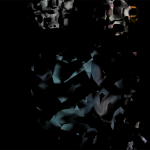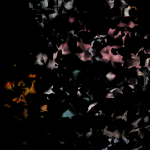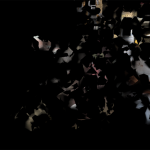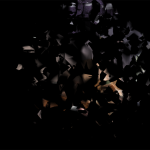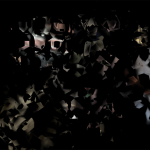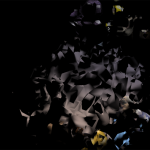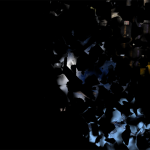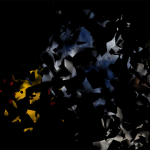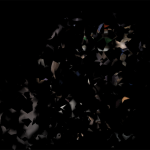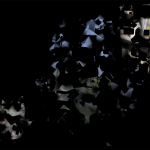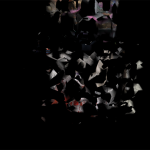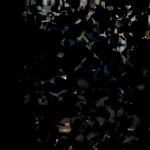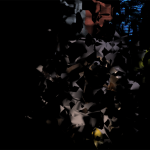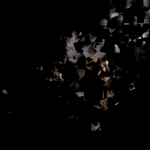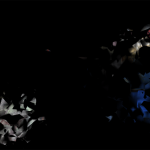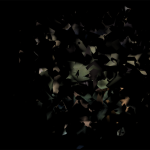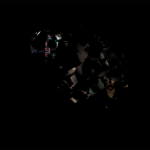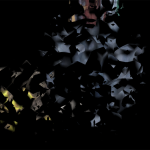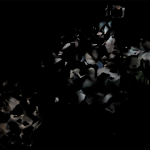The new scientific data for this project is generated from a microwave signal which transforms a reading of Richard Feynman’s (1982) paper on the birth of the quantum computer. The link between the quantum computer, consciousness and artistic expression is presented via the installation through the co-emergence of thought and quantum conditions. Quantum Consciousness is thus an experiment in the imaging and materialising of impossible states of quantum matter and the co-emergence of human consciousness.
The real time data from a phosphorus electron shows a green line from a normal Rabi oscillation, while the blue line shows how the phosphorus electron reacts to my voice reading from Feynman’s paper Simulating Physics with Computers [1]transmitted into a microwave signal.
Technical description
The qubit is controlled by a magnetic field which needs to oscillate at a very specific frequency, which is supplied by the microwave source. As long as the frequency of the source is stable at the qubit frequency, the spin will precess monotonically around the Bloch sphere, from down to up to down and so forth. If the microwave source frequency changes by a large amount (i.e. the microwave source is off-resonance with the qubit), the magnetic field no longer has any effect on the qubit and the spin stops moving in the Bloch sphere. Now if the microwave source is only slightly off-resonant, it will make the qubit precess at a different speed, and around a different axis than the “ideal” perfectly on-resonance case.
By feeding the signal from your voice recording into the frequency modulation input of the source, I am changing the microwave source frequency by small amounts, which are guided by the signal in your voice recording, therefore the qubit displays dynamic changes in its precession accordingly.
As for the sampling rate, I took 1000 samples of the qubit precession in total. But I had to do this within the lifetime of the qubit, so in the experiment, these 1000 samples were taken over 60 microseconds. In order to do this, I had to resample the sound signal so that the ~4 minutes of your voice recording could be shrunk to 60 us (this does not mean that I only a very small portion of the data from your recording, I used most of it, but I resampled it). To make the video, I resampled the qubit precession data, so that the 1000 samples that I took were spread out over the 4 minutes of your voice recording. (technical description from Juan Pablo Dehollain)
[1] Feynman, R. (1982). “Simulating physics with computers.” International Journal of Theoretical Physics 21(6-7): 467-488.
The experiment Feynman Spins Qubit is in collaboration with Dr Juan Pablo Dehollain Lorenzana and Associate Professor Dr Andrea Morello.
